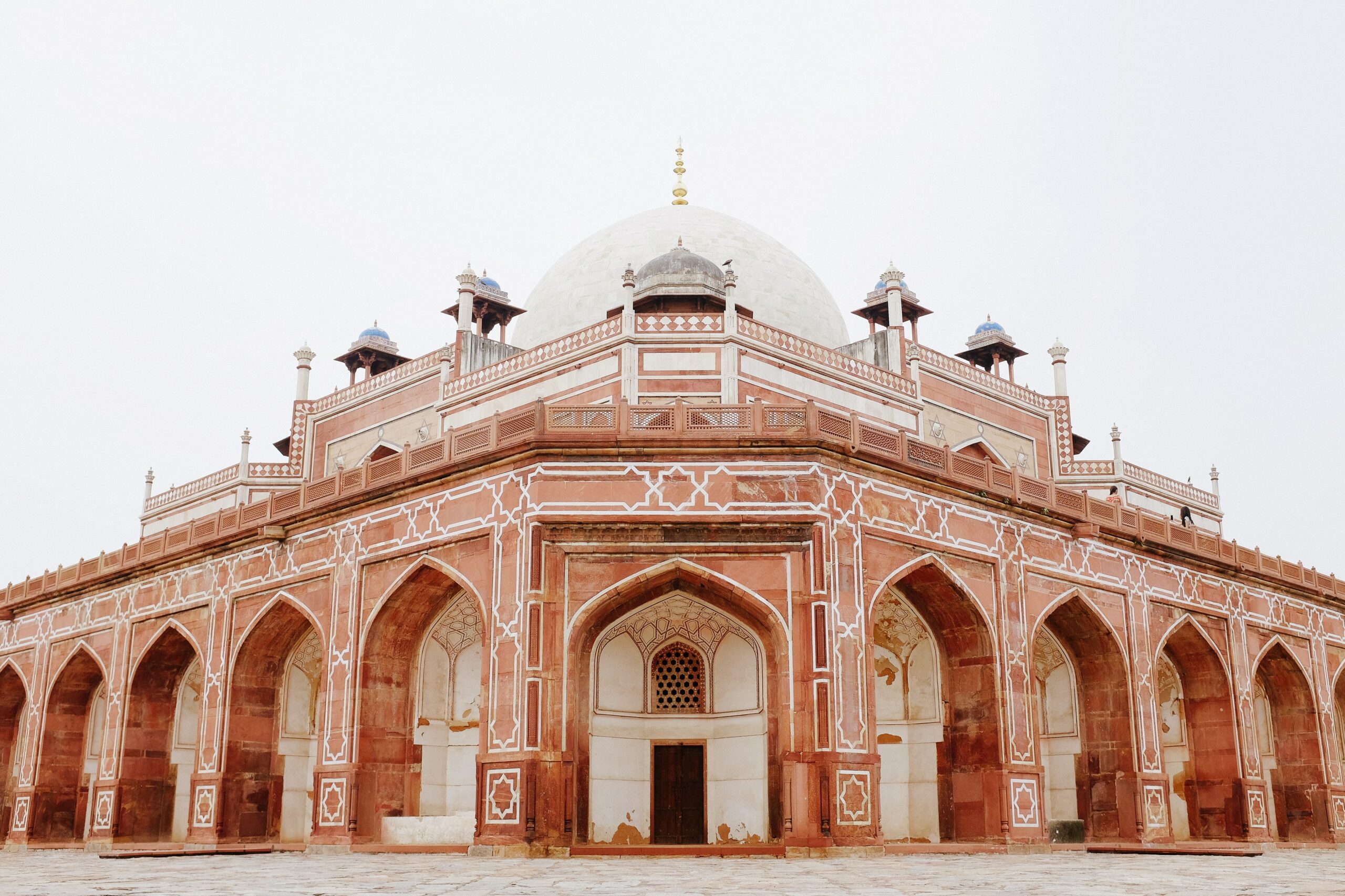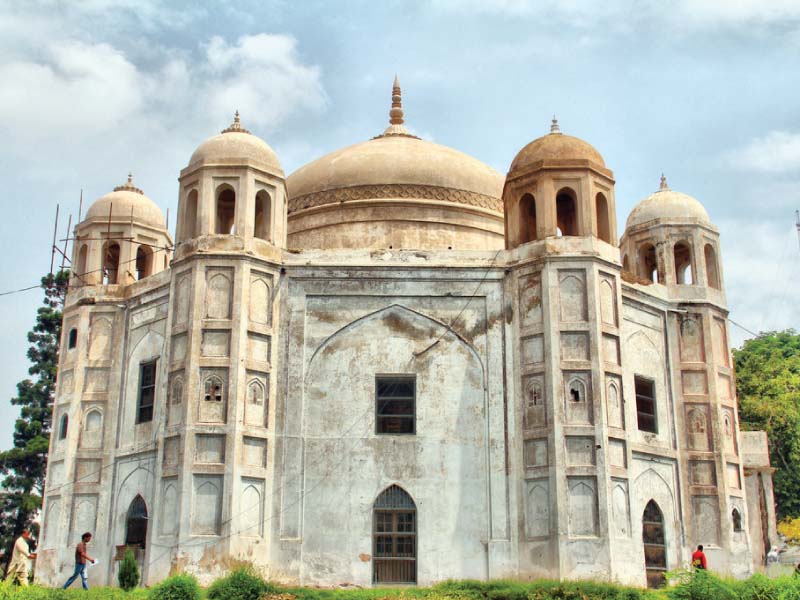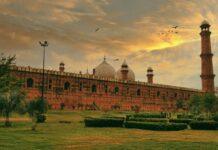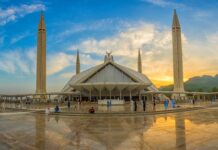Lahore, also known as the ‘City of Gardens’ the second largest city of Pakistan holds a special place in the country’s cultural story. It is a place where history is being told through the magnificent remains of the Mughal era. Lahore, a city steeped in cultural heritage, invites you to a charming tour of its historical forts and gardens.
Welcome to Lahore, where every brick whispers tales of the past, and every garden bloom holds a piece of history. Lahore is an historic city. This is a place which doesn’t only belong to Muslims but also to Christians, Hindus and Sikhs. From the moment you step into Lahore, everything from the bustling streets to historical landmarks and gardens gives a charm that is hard to resist. In this blog, we will take you to the Lahore Mughal heritage tour which you can consider on your next visit to the City of Gardens.
Lahore Culture History
Back in the day, the Mughals ruled Lahore, leaving behind amazing historical stories and traditions. The beautiful buildings, like the Badshahi Mosque and the stunning Lahore Fort, show us just how rich Lahore’s culture history is. Lahore was like the bustling center of the Mughal Empire, a place where important things happened. The impact of that time isn’t just something we remember from the past; it’s a big part of what makes Lahore, Lahore.
The old buildings that the Mughals built are proof of how grand and important they were. Each building, every arch, and all those tall minarets have stories to tell from a time when Lahore was at its best in culture and art. The Mughal influence isn’t just something you can see; it’s like a living part of the city that still amazes and inspires people today. So, when you look at these beautiful structures, imagine yourself going back to a time when Lahore was like the heart of a great empire, and everything they built was done with a lot of care and love.
Historical Sites In Lahore
The Lahore Mughal heritage tour is filled with many important places that show the culture and architecture of the area. Beloware some places to tell you more about Lahore’s historical monuments and gardens.
1. Lahore Fort
Lahore Fort also known as Shahi Qila contains 21 notable monuments. As you enter, you’ll see the fort’s grandness all around you. Think of the Lahore Fort as a living history book. With every step, you unfold chapters of the past. The detailed designs and big structures tell the story of a time when making things by hand was an art, and buildings were symbols of strength.
The most famous monuments of Lahore Fort include the Sheesh Mahal, Diwan-e-Khass, Moti masjid, Alamgiri Gate, Akbari Gate, and Naag Temple. So, when you visit the Lahore Fort, it’s not just a trip to a historic spot; it’s like stepping into the echoes of a time gone by, where every stone has a story to share.

2. Walled City Of Lahore
The Walled City of Lahore, also known as the Old City, is a part of Lahore, Pakistan, surrounded by walls from the Mughal era. It’s sometimes called the Mud City due to its original walls. The city has a rich history, reaching back to ancient India.
Near the Walled City, you’ll find notable places like Lahore Fort, Badshahi Mosque, Wazir Khan Mosque, and vibrant markets. Lahore’s allure lies in its bustling bazaars, including food and merchandise markets, making it a cultural hub that never sleeps. Akbari Mandi, the world’s largest spice market, holds historical significance in the spice trade and the origins of the British East India Company. The chowks in old Lahore, especially in Lohari and Rang Mehal, offer promising nightlife.
3. Jahangir’s Tomb
Jahangir’s Tomb, located in Shahdara town in the suburbs of Lahore, is the tomb of the 4th Mughal Emperor, Noor-ud-Din Muhammad Jahangir. It is built in the middle of a vast garden on the bank of the River Ravi, it was a vision of Jahangir’s queen, Noor Jahan.
Jahangir’s tomb is enclosed by a high brick wall with a gateway and surrounded by a garden with water channels. The tomb is adorned with fresco paintings, tile mosaic work, and various stone inlays, creating a captivating aesthetic. The exterior is decorated with fine marble fretwork, and four octagonal minarets, each with intricate designs, stand at each corner. The entrance gate is a double-storey building and is decorated with geometric and floral designs in red sandstone panels.

4. Shalimar Garden
Shalimar Gardens, also known as Shalimar Bagh was created during the rule of Mughal Emperor Shah Jehan in Lahore. The Mughals were not only masters of structures like mosques and forts but also skilled in crafting beautiful gardens, including Shalimar Gardens. Lahore earned the title of ‘The City of Gardens’ mainly because of Shalimar Gardens, distinguishing it from other Mughal Capitals.
The garden, with its vibrant features, reflecting pools, and pavilions, showcases the grand ambitions of Mughal architecture. Shalimar Gardens remains a colorful and historical gem in the Lahore Mughal heritage tour.
Hazuri Bagh
Hazuri Bagh, a beautiful garden situated between Lahore Fort’s Alamgiri gate and Badshahi Mosque’s eastern entrance, holds historical significance. Built as Aurangzeb’s seraye and later commemorated by Maharaja Ranjit Singh, the garden features the Hazuri Bagh Baradari, a white marble structure constructed in 1818. Hazuri Bagh showcases Maharaja Ranjit Singh’s architectural prowess. The central building is surrounded by gardens, including looking glasses, gilding, and vibrant colors. The garden serves as a historical space for locals, offering a peaceful escape from city life.
Hazuri Bagh, with its lush lawns and historic Baradari, stands as a testament to Lahore’s rich cultural heritage. A must-visit for those interested in the city’s history and architecture, it continues to be an important part of Lahore’s cultural heritage.
Badshahi Mosque
The Badshahi Mosque stands as a remarkable example of Mughal architecture, ranking as the second-largest mosque in Pakistan. It was built during Aurangzeb’s reign, it accommodates over 55,000 worshipers, and it closely resembles the Jama Masjid in Delhi, India. Spanning 270,000 square feet, the mosque includes a grand courtyard used for larger prayers. To enter the mosque, visitors step into Hazuri Bagh. The mosque’s rectangular main hall, iwan, marble domes, and 196-foot-tall minarets become visible in the courtyard. As Lahore’s iconic landmark, it’s a major tourist attraction and holds historical relics.
A small gallery at the main entrance houses relics attributed to the Holy Prophet Hazrat Muhammad (PBUH) and other revered figures. Near the mosque’s entrance, you’ll find the Tomb of Dr. Muhammad Iqbal, a key figure in the creation of Pakistan, and the tomb of Sir Sikandar Hayat Khan, credited for the mosque’s preservation.

Dehli Gate
City gates are important symbols of history in ancient settlements worldwide. Traditionally, these gates controlled who could enter or leave walled cities, managing people, vehicles, goods, and animals. They had key roles in defence, security, health, trade, taxation, and representation. Delhi Gate stands out among these gates, serving as the main entry for Mughals travelling from Delhi to Lahore Fort. The path from this gate to the fort was named the ‘Royal Trail’ or Shahi Guzargah.
Anarkali’s Tomb & Bazar
Anarkali’s tomb, an ancient Mughal structure, is believed to be where Nadira Begum, the famous lover of Crown Prince Saleem turned emperor, rests. The octagonal design, representing infinity, echoes the love story between them. Despite various uses over the centuries, the tomb stands as a significant example of the Mughal era, adding to the rich history of the provincial capital.
It was built by Emperor Jehangir for his love, Anarkali, the tomb underwent changes in different historical periods. From being occupied during the Sikh Empire to conversion into a church in the British Raj, it eventually became the Punjab Record Office. Next to the tomb is Anarkali Bazar, a major market in Lahore. It is split into old and new sections, and the market offers a variety of goods, from food to traditional handicrafts and clothing.

Conclusion
As we finish our tour of Lahore’s Mughal history, you can feel the stories in every old stone and garden. The history of the city isn’t just words; it’s an invitation to feel the greatness that time hasn’t forgotten.
Save on your tour to the historical sites of Lahore with Find My Adventure. Moreover, get a 12 month membership in which everything is packed for you. Get discounts on local restaurants, cafes, travel, thrill parks and much more with Vouch365’s KLI offer.
Are you interested in discovering exclusive discounts on your favorite brands?
Download the Vouch365 App now and unlock a world of incredible deals, discounts, and bank card offers on over 1000+ brands. Whether you’re in Karachi, Lahore, or Islamabad, this app has got you covered.
– To avail the best offers, you can choose your preferred city for exploration.
Karachi Lahore Islamabad Hyderabad Peshawar Multan
Bahawalpur Sialkot GujranWala Abbottabad Sargodha Gujrat
Get in touch with us for any questions or concerns: [email protected]













